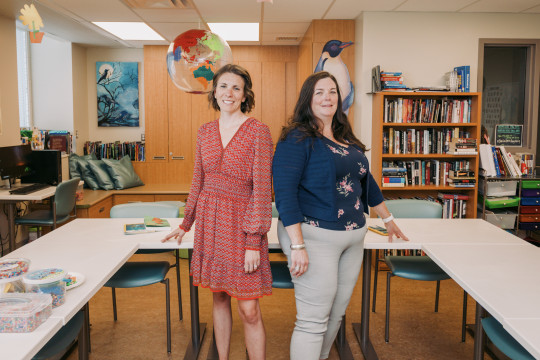|
Patricia Marchand, ESW in Children’s Health adds “Communication with students' home schools is vital. It helps keep children on track in the high school grades for example, so they can still get the necessary credits to progress to the next grade or graduate. It also makes for an easier transition back to school when the time comes as we try to keep our students connected not just with the work, but also with their classmates.”
Depending on the care area, some students attend regular, scheduled classroom time, while others receive more ad-hoc support. Everything is flexible to best suit the needs of the patient and work in collaboration with their health care treatments, whether that be deadlines, how assignments are completed or how students work together in groups. All accommodations are based on the needs of each individual student—something that everyone on the education team at IWK values.
“I have the ability to work one-on-one with students during their time at the IWK and tailor learning to meet their individual needs. I’ve been privileged to see students in the classroom persevere, work hard, try new things, while also going through a very difficult time in their lives. I have learned, and continue to learn, a lot from them,” says Countway.
“I love getting to work with fabulous students. I specifically enjoy the various grade levels. I may have a grade 12 working on an English essay and then switch focus to a grade primary learning to read, says Marchand. “It keeps me on my toes with my own learning."
“I’ve loved working on a multi-disciplinary team,” says Perlmutter. “I’m privileged to assist students individually to re-engage them in the educational process and expand on their future potential and possibilities. This is why school is such an integral part of the healing process. School begins at the age of four and continues throughout their childhood, adolescence and into adulthood. It is the centre of their world and is not only 'The filling of a pail, but the lighting of a fire' [William Butler Yeats].”
|
